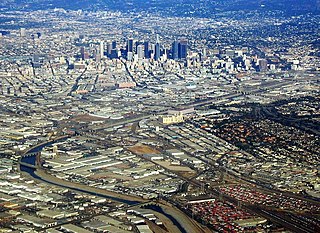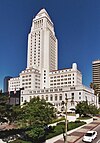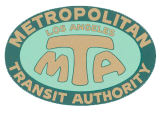This article covers streets in Los Angeles between and including 1st Street and 10th Street. Major streets have their own linked articles; minor streets are discussed here.

Los Angeles, officially the City of Los Angeles and often known by its initials L.A., is the most populous city in California, the second most populous city in the United States, after New York City, and the third most populous city in North America. With an estimated population of four million, Los Angeles is the cultural, financial, and commercial center of Southern California. The city is known for its Mediterranean climate, ethnic diversity, Hollywood and the entertainment industry, and its sprawling metropolis. Los Angeles is the largest city on the West Coast of North America.
Contents
These streets run parallel to each other, roughly east–west.
Streets change from west to east (for instance West 1st Street to East 1st Street) at Main Street.

Main Street is a major north-south thoroughfare in Los Angeles, California. It serves as the east-west postal divider for the city and the county as well.
All of these streets run through Downtown Los Angeles. In addition, many of the streets also run through Westlake and Boyle Heights.

Downtown Los Angeles (DTLA) is the central business district of Los Angeles, California, as well as a diverse residential neighborhood of some 58,000 people. A 2013 study found that the district is home to over 500,000 jobs. It is also part of Central Los Angeles.

Westlake is a residential and commercial neighborhood in Central Los Angeles, California. It was developed in the 1920s, but many of its elegant mansions have been turned into apartments, and many new multiple-occupancy buildings have been constructed.

Boyle Heights is a neighborhood of almost 100,000 residents east of Downtown Los Angeles in the City of Los Angeles, California. The district has more than 20 public schools and 10 private schools.
1st, 4th, 6th/Whittier, 7th, and Olympic have crossings over the Los Angeles River; the others do not.

The Sixth Street Viaduct, also known as the Sixth Street Bridge, was a viaduct bridge that connected the Arts District in Downtown Los Angeles with the Boyle Heights neighborhood. It spanned the Los Angeles River, the Santa Ana Freeway, and the Golden State Freeway (I-5), as well as Metrolink and Union Pacific railroad tracks and several local streets. Built in 1932, the viaduct was composed of three independent structures: the reinforced concrete west segment, the central steel arch segment over the river, and the reinforced concrete east segment. Over the years, the structure itself, surrounding areas, and the concrete banks of the Los Angeles River, became eyesores from years of residents vandalizing the area with graffiti, trash, human waste, and homeless encampments. In 1986, the Caltrans bridge survey found the Sixth Street Viaduct eligible for inclusion in the National Register of Historic Places.

The Los Angeles River starts in the Simi Hills and Santa Susana Mountains and flows through Los Angeles County, California, from Canoga Park in the western end of the San Fernando Valley, nearly 51 miles (82 km) southeast to its mouth in Long Beach. Several tributaries join the once free-flowing and frequently flooding river, forming alluvial flood plains along its banks. It now flows through a concrete channel on a fixed course, which was built after a series of devastating floods in the early 20th century.



















